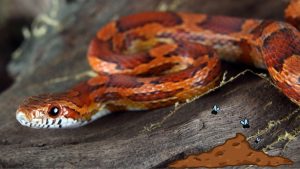Expert Tips for Happy, Healthy Fish
Taking care of goldfish is a rewarding experience that requires patience, knowledge, and dedication. As pet owners, we want to provide our goldfish with the best possible care to ensure they live a long and healthy life. In this article, we will discuss the essential steps you need to take to take care of your goldfish.
The first step in taking care of goldfish is to provide them with a suitable habitat. Goldfish should be kept in the largest possible habitat available, with a size dependent on the variety of goldfish and the full-grown size of the fish. The minimum tank size for one goldfish is 20 to 30 U.S. gallons. It’s important to note that if goldfish don’t have enough space, a survival mechanism can start making it so they will stop growing, but their organs will continue to grow. Therefore, it’s crucial to provide them with enough space to grow and thrive. Additionally, goldfish tanks should be kept away from direct sunlight and drafts to prevent temperature fluctuations.
The second step is to maintain proper water quality. Goldfish produce a lot of waste, so it’s crucial to keep their water clean and healthy. The water in the tank should be partially changed weekly, and a filtration system should be used to remove any harmful chemicals or toxins. It’s also essential to monitor the water temperature, pH levels, and ammonia and nitrate levels regularly. By following these steps, you can ensure that your goldfish will live a long and healthy life.
Goldfish Care Basics
When it comes to taking care of goldfish, there are a few basic things that we need to keep in mind. Proper aquarium setup, filtration, and feeding are the most important aspects of goldfish care.
Aquarium Setup
The first thing to consider when setting up an aquarium for goldfish is the tank size. Goldfish are active swimmers and produce a lot of waste, so it’s important to provide them with enough space to swim around and keep the water clean. As a general rule, we should provide at least 20 gallons of water per goldfish.
We also need to consider the environment in which the goldfish will live. Goldfish prefer a water temperature between 65-75°F, so it’s important to use a thermometer to monitor the water temperature. In addition, we need to ensure that the water is properly aerated and that the water quality is maintained. This can be achieved through regular tank maintenance and the use of a water test kit.
Filtration
Filtration is essential for maintaining a healthy environment for our goldfish. We should use a filter that is appropriate for the tank size and the number of goldfish we have. A good filter will help remove waste and debris from the water, which will help keep the water clean and clear.
Feeding
Goldfish are omnivores and have a hearty appetite. We should feed them a balanced diet of flakes or pellets that are specifically formulated for goldfish. Overfeeding can lead to health problems and can also cause water quality issues, so it’s important to feed them in moderation. We should also avoid feeding them human food or treats that are not specifically designed for goldfish.
In addition to feeding, we should also consider the water conditioner we use. A good water conditioner will help neutralize harmful chemicals in the water and promote a healthy immune system for our goldfish.
Overall, proper goldfish care requires attention to detail and a commitment to maintaining a healthy environment for our pets. Improper care can lead to health problems and a shorter lifespan for our goldfish, so it’s important to stay informed and take the necessary steps to ensure their well-being.
Types of Goldfish
When it comes to goldfish, there are many different types to choose from. In this section, we will discuss the most common varieties of goldfish, including both common and fancy types.
Common Varieties
Comet, shubunkin, wakin, and ryukin goldfish are some of the most common varieties. These types of goldfish are usually more resilient and don’t require as much care as the fancy varieties. They are also less expensive and can be kept in outdoor ponds.
Comet goldfish are known for their long, flowing tails, and are typically orange or red in color. Shubunkin goldfish, on the other hand, have a calico pattern that includes shades of blue, red, and white. Wakin goldfish are similar to common goldfish, but have a more streamlined body shape. Ryukin goldfish are known for their round bodies and short, curved tails.
Fancy Varieties
Fancy goldfish are known for their unique, ornamental features, such as bulging eyes, double tails, and unusual body shapes. These types of goldfish require more care and attention than common varieties, and should be kept in indoor tanks.
Oranda, moor, ranchu, telescope, celestial, black moor, pearlscale, and bubble eye goldfish are some of the most popular fancy varieties. Oranda goldfish have a prominent, fleshy growth on their head, known as a wen. Moor goldfish are black in color and have flowing tails and fins. Ranchu goldfish have a round, egg-shaped body and no dorsal fin. Telescope goldfish have protruding eyes that point upwards. Celestial goldfish have eyes that point upwards and are set in a bubble-like sac. Black moor goldfish are black in color and have bulging eyes. Pearlscale goldfish have a bumpy, pearl-like texture to their scales. Bubble eye goldfish have fluid-filled sacs under their eyes that resemble bubbles.
When choosing a goldfish, it’s important to consider the type and their specific care requirements. Whether you choose a common or fancy variety, providing them with a suitable environment and proper care will help ensure their health and happiness.
Breeding Goldfish
Breeding goldfish can be a fun and rewarding experience. Here are some tips to help you successfully breed your goldfish:
- Prepare the breeding tank: Before breeding your goldfish, you need to create a breeding tank. The tank should be at least 20 gallons and have a sponge filter to prevent the fry from being sucked up. The water temperature should be between 68-74°F and the pH level should be around 7.0-7.2. You can also add some plants or spawning mops to give the fish a place to lay their eggs.
- Choose healthy adult fish: To breed goldfish, you need both male and female fish. Choose healthy adult fish that are at least one year old. Look for fish that are active, have bright colors, and are free of any signs of disease.
- Condition the fish: To encourage breeding, you need to condition your fish. Feed them a high-quality diet of live or frozen foods like brine shrimp, bloodworms, or daphnia. You can also increase the water temperature by a few degrees and perform regular water changes to keep the water clean.
- Watch for signs of breeding: Once you have conditioned your fish, you should start to see signs of breeding. The male fish will chase the female fish around the tank, nudging her and trying to push her towards the plants or spawning mop. The female fish will lay her eggs and the male fish will fertilize them.
- Remove the adult fish: After the eggs have been laid and fertilized, you should remove the adult fish from the breeding tank. This will prevent them from eating the eggs or the fry. Keep the tank dark and quiet to encourage the eggs to hatch.
- Care for the fry: Once the eggs hatch, you will have goldfish fry. Feed them small amounts of food several times a day, and perform regular water changes to keep the water clean. As the fry grow, you can gradually increase the amount of food and the size of the tank.
Breeding goldfish can be a fun and rewarding experience if done correctly. By following these tips, you can increase your chances of successfully breeding your goldfish.
Goldfish in Ponds
If you’re looking to keep goldfish, a pond can be a great option. Outdoor ponds can provide a natural and spacious environment for your fish to thrive in. However, it’s important to keep a few things in mind when it comes to caring for goldfish in ponds.
Firstly, the size of your pond is important. The number of goldfish that will inhabit the pond should determine the size of the pond. Generally speaking, a single goldfish requires at least 10 gallons of water, while an additional 2-3 gallons should be added for each extra fish. A rule of thumb is to keep the pond at least 2 feet deep to ensure the safety of goldfish in the winter season. Usually, the minimum size of ponds is 4 feet in diameter. The bigger the pond, the better.
Secondly, maintaining good water quality is crucial. Testing your water regularly is important to ensure that the pH is between 7-8.4 and temperatures are kept within a narrow range. Water quality test kits are available to test weekly when you have a freshwater fish tank. Buffering your water can also help to maintain a stable pH level. Topping up your pond and changing pond water if necessary can help maintain good water quality.
Thirdly, adding plants and other accessories to your pond can help create a natural and healthy environment for your goldfish. Plants can help oxygenate the water and provide shelter for your fish. There are specifically designed water filter systems, aerators, pumps, and other accessories made for fish ponds.
Lastly, protecting your goldfish pond is important. Make sure to keep predators such as birds and cats away from your pond. Covering your pond with netting or placing a fence around it can help protect your fish.
Overall, keeping goldfish in ponds can be a rewarding experience. By following these simple steps, we can ensure that our goldfish thrive in their natural and spacious environment.
Goldfish Health
As responsible goldfish caretakers, we must prioritize the health of our fish. In this section, we will discuss common health issues that goldfish may face and preventative measures that we can take to ensure their well-being.
Common Health Issues
Goldfish are prone to several health issues, including:
- Ich: This parasitic infection causes white spots on the fish’s body and fins. It can be treated with medication.
- Poor Water Quality: Goldfish are sensitive to changes in pH, ammonia, nitrite, and nitrate levels. It’s essential to maintain good water quality by testing the water regularly and performing water changes as needed.
- Bacterial Infections: Symptoms of bacterial infections include red streaks on the fins or body, lethargy, and loss of appetite. Treatment may involve antibiotics.
- Fin Rot: This condition causes the fins to deteriorate. It can be caused by poor water quality or bacterial infections. Treatment may involve medication and improving water quality.
- Loss of Color: Stress, poor water quality, and illness can cause goldfish to lose their vibrant colors. Addressing the underlying issue can help restore their color.
Preventative Measures
Preventing health issues is always better than treating them. Here are some preventative measures that we can take to keep our goldfish healthy:
- Maintain Good Water Quality: As mentioned earlier, goldfish are sensitive to changes in water quality. Regularly test the water and perform water changes as needed to maintain a healthy environment for your fish.
- Provide a Balanced Diet: A balanced diet is crucial for the health of your goldfish. Feed them a variety of foods, including pellets, flakes, and treats, in appropriate portions.
- Avoid Overcrowding: Goldfish need space to swim and thrive. Overcrowding can lead to poor water quality and stress, which can cause health issues.
- Quarantine New Fish: When introducing new fish to an established tank, quarantine them first to prevent the spread of disease.
- Observe Your Fish: Regularly observing your fish can help you detect any health issues early on. Look for changes in behavior, appetite, and physical appearance.
By following these preventative measures and promptly addressing any health issues that arise, we can ensure the long-term health and happiness of our goldfish.
Tank Mates for Goldfish
Goldfish are social creatures, and they can benefit from having tank mates. However, not all fish are compatible with goldfish. Here are some things to consider when choosing tank mates for your goldfish:
- Size: Goldfish are large fish, and they need plenty of space to swim. Tank mates should be similar in size to avoid overcrowding.
- Temperament: Goldfish are generally peaceful, but they can be aggressive towards smaller fish. Avoid adding fish that are too small or timid.
- Water Temperature: Goldfish prefer cooler water temperatures, so tank mates should be able to tolerate cooler water as well.
- Diet: Goldfish are omnivores and will eat both plant and animal matter. Tank mates should have a similar diet to avoid competition for food.
Here are some examples of suitable tank mates for goldfish:
- Plecos: Plecos are bottom-dwelling fish that can help keep the tank clean by eating algae. They are also compatible with goldfish because they are large enough to avoid being eaten and are peaceful.
- Rosy Barbs: Rosy Barbs are colorful and active fish that can add visual interest to the tank. They are also hardy and undemanding, making them a good choice for beginner hobbyists.
- Dojo Loaches: Dojo Loaches are bottom-dwelling fish that can help keep the tank clean by eating leftover food. They are also peaceful and can coexist with goldfish.
It’s important to note that not all fish are compatible with goldfish. Avoid adding fish that are too small, aggressive, or have different temperature or dietary requirements. Always research the compatibility of any potential tank mates before adding them to your goldfish tank.
History and Cultural Significance
Goldfish have a long and interesting history that dates back to the Tang Dynasty in China. During this time, carp were selectively bred to bring out a golden color, leading to the creation of the first goldfish. These fish were highly prized and kept in ornamental ponds, often by the wealthy and elite members of society.
Over time, goldfish became more popular and were bred for their unique colors and patterns. By the 16th century, they had made their way to Japan and Europe, where they were kept as pets and admired for their beauty.
In addition to their aesthetic appeal, goldfish have also been associated with luck and prosperity in many cultures. In China, they are often given as gifts during the Lunar New Year, as they are believed to bring good fortune and wealth. In Japan, they are a symbol of perseverance and strength, as they are able to survive in harsh conditions.
Today, goldfish are one of the most popular types of fish kept as pets around the world. While they still hold cultural significance in some regions, they are primarily appreciated for their beauty and ease of care. Whether you are a seasoned fish keeper or a first-time pet owner, goldfish can make a great addition to your home aquarium.
Accessories and Maintenance
Tank Accessories
When it comes to setting up a goldfish tank, there are a few accessories that are necessary to ensure the health and happiness of your fish. First and foremost, you’ll need an appropriately sized tank. As a general rule of thumb, goldfish require a minimum of 20 gallons of water per fish. So, if you have two goldfish, you’ll need a 40-gallon tank. It’s important to keep in mind that goldfish can grow quite large, so you’ll want to plan for their eventual size when selecting a tank.
In addition to the tank itself, you’ll need a few other accessories. One of the most important is a filter. Goldfish are messy eaters and produce a lot of waste, so a good filter is essential for keeping the water clean and clear. You’ll also want to consider adding some aquarium gravel to the bottom of the tank. Not only does this help with filtration, but it also provides a natural-looking habitat for your fish.
Maintenance
Once you have your tank and accessories set up, it’s important to establish a regular maintenance routine. This will help keep your fish healthy and happy, and ensure that the tank stays clean and clear.
The first step in maintaining your goldfish tank is to test the water regularly. You can purchase a water testing kit at your local pet shop, and you should test the water at least once a week. This will help you keep track of the levels of ammonia, nitrite, and nitrate in the water, which can all have an impact on the health of your fish.
Another important aspect of tank maintenance is water changes. You should aim to change at least 25% of the water in the tank every two weeks. This will help keep the water clean and clear, and remove any excess waste or debris.
Finally, you’ll want to make sure that you’re properly maintaining your filter. This may involve cleaning or replacing the filter media, depending on the type of filter you have. You should also regularly check the water flow to ensure that the filter is working properly.
By following these simple steps, you can ensure that your goldfish have a clean, healthy, and happy home.
Frequently Asked Questions
How long do goldfish live?
Goldfish can live for many years if they are properly taken care of. On average, they can live for 10 to 15 years, but some can even live up to 20 years or more. The lifespan of a goldfish depends on various factors, including the quality of care, water conditions, and genetics.
What do goldfish need to survive in a tank?
Goldfish need a few things to survive in a tank. First and foremost, they need clean water. This means that you need to maintain proper water quality by testing the water regularly, changing the water frequently, and using a filter. They also need a suitable tank size, appropriate decorations, and a healthy diet.
Do goldfish need a filter?
Yes, goldfish need a filter in their tank. A filter helps to remove waste and debris from the water, which can be harmful to the fish. It also helps to maintain proper water quality, which is essential for the health and well-being of the fish.
What size tank should I get for a goldfish?
Goldfish need a lot of space to swim and grow, so it is important to get a tank that is large enough for them. As a general rule, you should have at least 20 gallons of water per goldfish. However, if you have larger goldfish or more than one goldfish, you will need a larger tank.
What is the best food for goldfish?
Goldfish are omnivores, which means they eat both plants and animals. The best food for goldfish is a high-quality commercial fish food that is specifically formulated for goldfish. You can also supplement their diet with fresh or frozen foods, such as brine shrimp, bloodworms, and vegetables.
Can goldfish live in tap water?
Goldfish can live in tap water, but it is important to make sure that the water is properly treated before adding it to the tank. Tap water contains chlorine and other chemicals that can be harmful to fish. You can remove these chemicals by using a water conditioner or by letting the water sit for 24 hours before adding it to the tank.
Author
-

Lawrence, the founder of Pet Ploy, established the website in mid-2023. With a lifelong love for pets, Lawrence has been surrounded by a variety of animals since his early years. From dogs and cats to guinea pigs, rabbits, fish, and more, he has experienced the joy of caring for a diverse range of pets. Drawing from his deep-rooted passion, Lawrence created Pet Ploy to share his knowledge and enthusiasm with fellow pet enthusiasts. Through the platform, he aims to provide valuable insights, tips, and resources to promote the well-being and happiness of pets everywhere.











